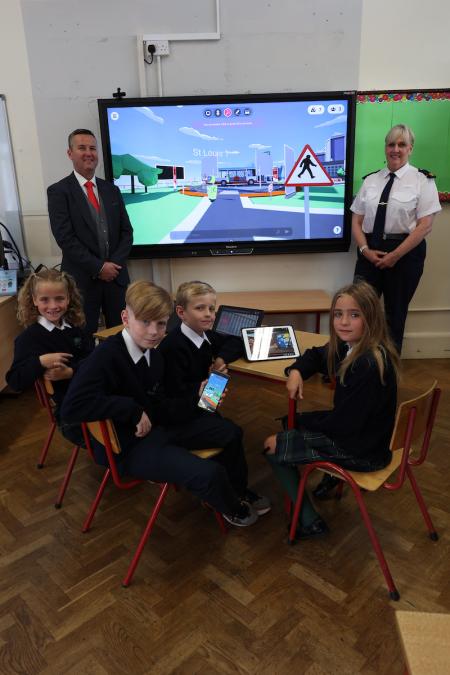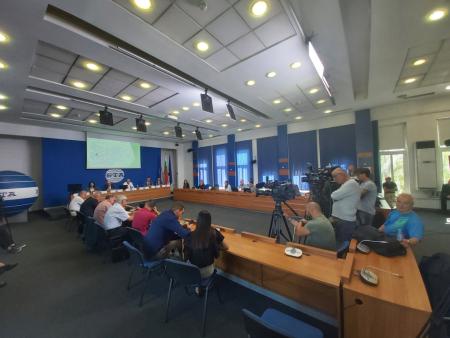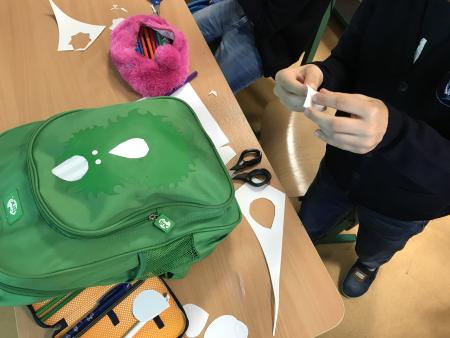Our members are dedicated to improving road safety and sharing their knowledge with the wider community. Here, you can explore our members' good practices – initiatives that have been assessed for their effectiveness in addressing a road safety problem and have proven results.
Get inspired – and sign up to share your good practices too!

Thursday, September 22, 2022
Our annual appeal Minister of State at the Department of Transport, Ms. Hildegarde Naughton has announced that she intends to double the fine for failing to stop at a school warden sign. This will see the fine increase from €80 to €160. The announcement comes as the Road Safety Authority (RSA) and An Garda Síochána call on drivers to watch out for children as they return to school.

Friday, September 9, 2022
- Липса на институционално лидерство и координация на политиките по БДП
- Липса на прозрачност и публичност на действията на държавните институции
- Липса на практики за разследване бездействията на стопаните на пътя спрямо поддръжката на пътищата
- Липса на прозрачност и публичност на действията на държавните институции
- Липса на практики за разследване бездействията на стопаните на пътя спрямо поддръжката на пътищата

Tuesday, September 6, 2022
En France, près d’une personne sur cinq tuées dans les accidents de la route a entre 18 et 24 ans. Cette tranche d’âge ne représente seulement que 8 % de la population. Au niveau national et international, les accidents de la route correspondent à la première cause de mortalité chez les jeunes.
Afin de sensibiliser sur cette cause, la Fondation VINCI Autoroutes a réalisé une étude sociologique dans le cadre du programme de recherche sur la prévention des risques chez les jeunes conducteur et a par la suite réalisé une campagne digitale intitulée « Les jeunes au volant ». Cette opération avait pour objectif d’examiner le rapport des jeunes à la conduite et à l’automobile.
Le principal objectif de cette campagne est d’avant tout sensibiliser les jeunes âgés de 18 à 25 ans aux différents risques routiers.
Afin de sensibiliser sur cette cause, la Fondation VINCI Autoroutes a réalisé une étude sociologique dans le cadre du programme de recherche sur la prévention des risques chez les jeunes conducteur et a par la suite réalisé une campagne digitale intitulée « Les jeunes au volant ». Cette opération avait pour objectif d’examiner le rapport des jeunes à la conduite et à l’automobile.
Le principal objectif de cette campagne est d’avant tout sensibiliser les jeunes âgés de 18 à 25 ans aux différents risques routiers.

Wednesday, August 31, 2022
L’arresto cardiaco è un importante problema sanitario in Europa e in tutto il mondo.
Ogni anno oltre 400.000 persone in Europa e 60.000 in Italia sono colpite da arresto cardiaco. Nel 70% dei casi l’arresto cardiaco è testimoniato da non sanitari che possono iniziare le manovre di rianimazione cardiopolmonare (RCP). Se i testimoni di un arresto cardiaco iniziano la RCP prima dell’arrivo dell’ambulanza, le possibilità di sopravvivenza della vittima aumentano di due/tre volte rispetto ai casi in cui la RCP non viene iniziata. ll progetto “Progetto Basic Life Support” è promosso da European Resuscitation Council (ERC) e European Driving Schools Association (EFA-EU) e UNASCA
Ogni anno oltre 400.000 persone in Europa e 60.000 in Italia sono colpite da arresto cardiaco. Nel 70% dei casi l’arresto cardiaco è testimoniato da non sanitari che possono iniziare le manovre di rianimazione cardiopolmonare (RCP). Se i testimoni di un arresto cardiaco iniziano la RCP prima dell’arrivo dell’ambulanza, le possibilità di sopravvivenza della vittima aumentano di due/tre volte rispetto ai casi in cui la RCP non viene iniziata. ll progetto “Progetto Basic Life Support” è promosso da European Resuscitation Council (ERC) e European Driving Schools Association (EFA-EU) e UNASCA

Wednesday, June 22, 2022
Kiekvienais metais kelyje eismo įvykiuose nukenčia arba žūsta vaikai. Pavyzdžiui 2021 metais sužeistų vaikų Lietuvos keliuose iki 15 metų buvo 405, žuvusių 7. Kasmet šis skaičius išlieka panašus ir deja yra per didelis. Dažnai eismo nelaimės įvyksta tamsiuoju paros metu, kai vaikai rudens rytais keliauja į mokyklą. Mažamečiai vaikai dar neturi pakankamų įgūdžių užtikrinti savo saugumą kelyje.